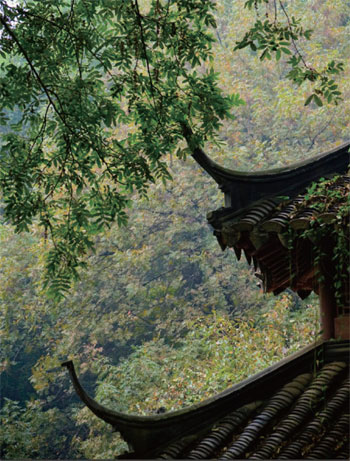Life on the Water's Edge: The Culture and History of the Qinhuai River
Nanjing, this city so rich in culture and nature that one will find themselves alternating between ancient and modern with every step with a canopy of cooling foliage overhead. Lush greenery cascades over sweeping hills and mountains while waterways serpentine through the city of steel and glass. Nanjing, this city of dreams and imperial artistry blossoms like a lotus flower floating along a river oblivious to the outside world. With so much to take in it can be difficult to know where to start. However, the heartbeat of Nanjing can be heard along the undulating riverbanks of the Qinhuai.
The Foundations Laid in the Six Dynasties
Time and again throughout the long history of China the southern city of Nanjing has held the position not only as the political capital but also as the cultural center. Often overshadowed by the tragic events of the previous 100 years, the beauty and wonder of Nanjing is reflected in the sparkling Qinhuai River as it flows through this great city. Beginning over 2,500 years ago and with the ebb and flow of dynastic shifts, reaching an apex in the Ming Dynasty, the city has carved its history into the banks of the Qinhuai River.
The early history of Nanjing as a seat of great importance dates back to the Warring States Period, around 400 BC. Large collections of tribal families and warriors sought, gained and lost governing seats time and time again through a relatively short period, Nanjing would often be chosen as the capital for its geographical position and rich resources. As the city sits at the point where the smaller Qinhuai River meets the mighty Yangtze River, maintaining a station of power was paramount for those who wanted to maintain their rule over the land.
From the period of 220 AD – 589 AD, now called the Six Dynasties period, many of the cultural foundations that have formed Chinese society came into being. Specifically in Nanjing, silk production and other craft arts were beginning to be produced in abundance. Nanjing scholars such as Wang Xizhi and Gu Kaizhi were laying the foundations for the unique style of Chinese paintings and calligraphy. Stories from the countryside talk about the legend of great hunters selecting rabbit fur as the pre-eminent choice for fine calligraphy brushes, the first and finest being from Nanjing.
Confucian thought opened up people's minds not only to this philosophy but also to Buddhism and Taoism, both of which would set down long lasting roots in Nanjing. The site of hundreds of temples of worship being built inspired many scholars to turn away from the battles and conflicts that were being fought all over China and look inward to create poetry, prose and literary works that have become classics.
The literature created at that time was a unique mix of both poetry and long form writing or prose. Two of the prime examples are from the scholar Liu Xie and his text Wenxin Diaolong or The Literary Mind and the Carving of Dragons and Xiao Tong with his text Wenxuan. These writings are an early form of literary criticism where the philosophical ideas and use of words furthered the idea of creative writing in early China. Inspired by this air of discussion perhaps, scholars began to develop the basis for the four tones that serve as the basis for the modern Chinese language.
Unfortunately, as so often has happened in the long history of Nanjing, the power struggles that have made up the equally long history of China destroyed much of the physical remnants of this time. What did survive, however, are some of Nanjing's most beautiful and recognizable. One example of these is the large stone sculptures that rise up on the barren land on the outskirts of Nanjing. These remnants from the Southern Dynasties were part of a now vanished yet massive burial tomb construction. One can see the influence of these few sculptures of the later Ming Dynasty that emerged some 1,000 years later.
Not far from where the outer Qinhuai River joins the rushing Yangtze is the Stone City, another testament to the early life of Nanjing as a center of physical dominance in the region. Begun around 333 BC, and foreshadowing the later Nanjing city wall of the Ming Dynasty, this 3,000-meter-long edifice stretches alongside the outer Qinhuai River. This one-time military stronghold has been preserved into a large park where only a small section of wall face remains, looking out like a ghost over the modern city.
Perhaps the most recognizable construction from this early period is the Jiming Temple. Echoing the shifting tide of the nearby waterways, this temple of the Southern Dynasties has been destroyed and rebuilt many times. The two most notable times being in the early Ming Dynasty and more recently in 1973. This gleaming yellow and red pagoda shoots out of the landscape standing tall and proud against the backdrop of the steel and glass of the modern city.
Much like the heady and sweet smells from the osmanthus forests around the modern city the dynasties that reigned over Nanjing were inspired by the intoxifying air of cultural progress. Each new leader tried to tear down the past and create a new future but would only fuel the fire of the creative spirit of previous generations. Art, philosophy and literature blossomed out of the ashes stronger and stronger each time. The zenith of this perpetual rebirth came in 1368 when
Nanjing was made the capital of a united China and the Ming Dynasty began.
 0
0 









Go to Forum >>0 Comments